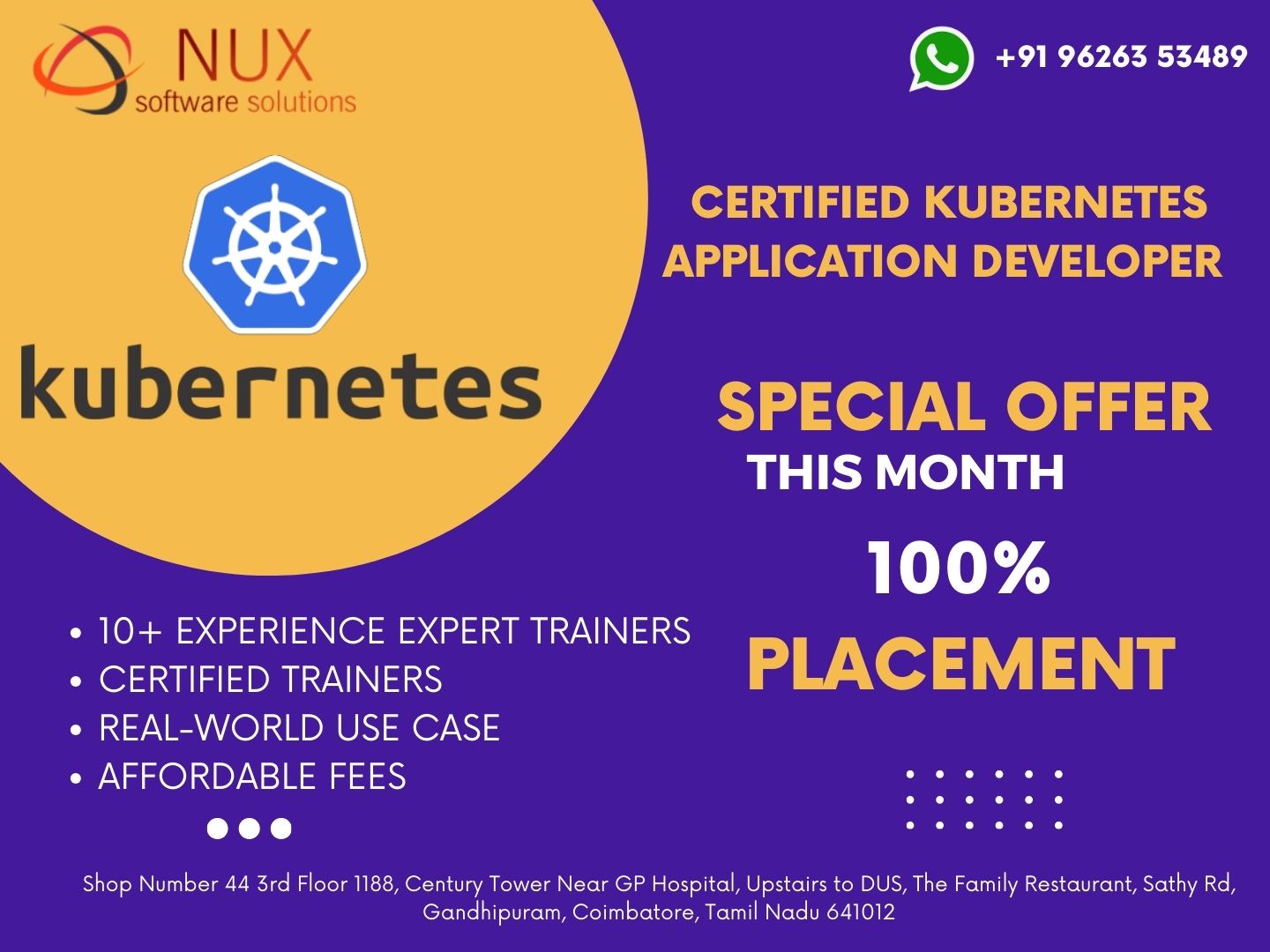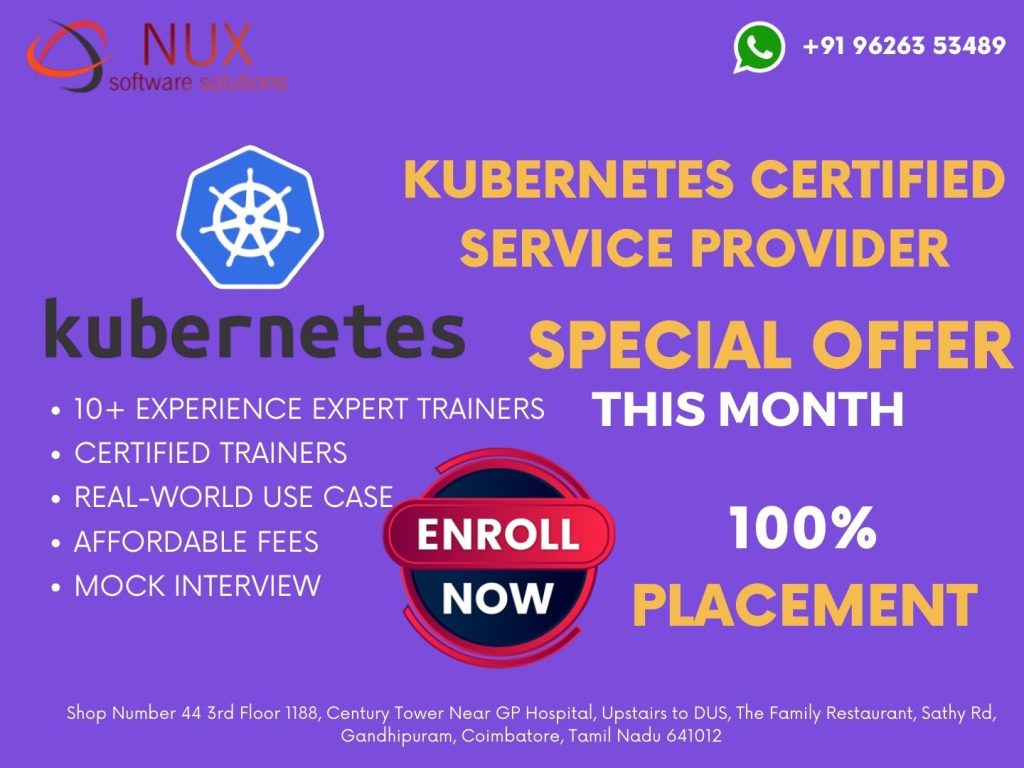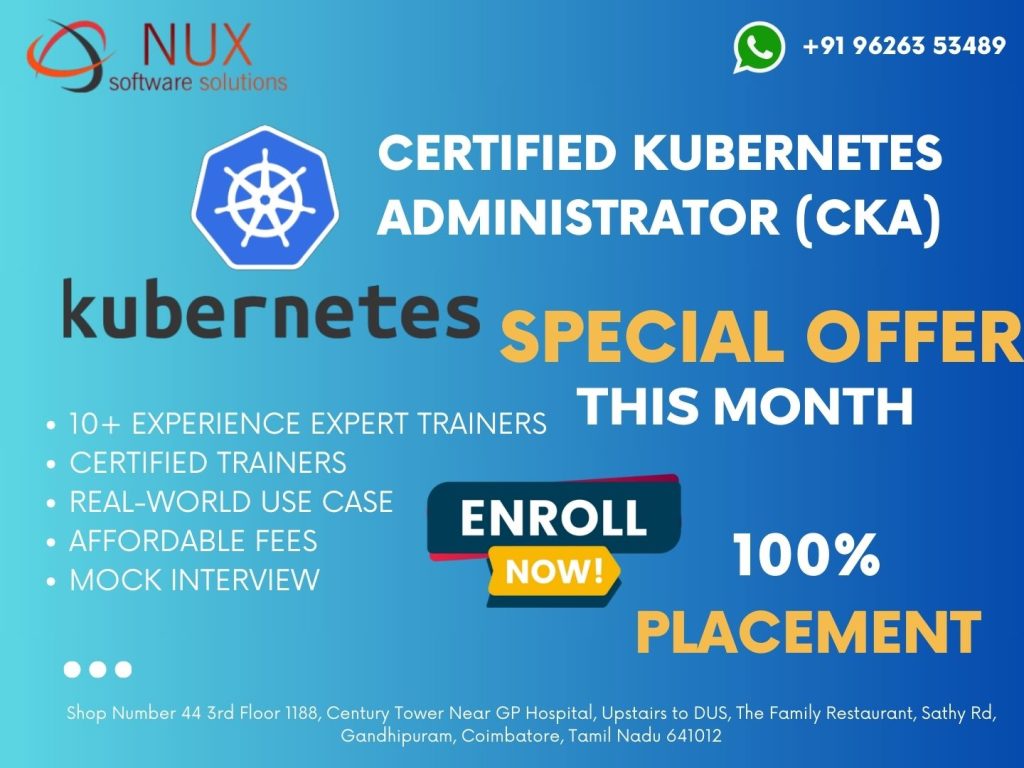Certified Kubernetes Application Developer

Course Summary
The Certified Kubernetes Application Developer (CKAD) course is designed for developers and DevOps professionals who want to demonstrate their skills in designing, building, and running cloud-native applications on Kubernetes. This course prepares learners for the official CKAD exam, which is a performance-based, hands-on certification governed by the Cloud Native Computing Foundation (CNCF) in collaboration with The Linux Foundation.
Through practical labs, real-world examples, and exam-focused scenarios, participants gain a comprehensive understanding of Kubernetes application architecture and deployment strategies. The course emphasizes practical proficiency in building, troubleshooting, and optimizing applications in Kubernetes clusters.
What is the CKAD Certification?
The CKAD certification validates that a developer can:
-
Define application resources and use Kubernetes core primitives
-
Design, build, and deploy scalable applications in Kubernetes
-
Configure application security, storage, and networking
-
Understand observability, troubleshooting, and debugging workflows
This certification is widely recognized across the DevOps and cloud-native ecosystem, offering strong credibility for those working in modern infrastructure environments.
Who Should Take This Course?
This course is ideal for:
-
Application developers building microservices or cloud-native apps
-
DevOps engineers transitioning into Kubernetes environments
-
Site reliability engineers (SREs) who manage production-grade clusters
-
Backend developers working in containerized infrastructures
-
IT professionals preparing for the CKAD exam
A foundational understanding of containers and basic Kubernetes concepts is recommended before starting this course.
Key Learning Outcomes
By the end of the CKAD course, participants will be able to:
-
Use Kubernetes core objects (Pods, Deployments, Services)
-
Define and manage application configurations using ConfigMaps and Secrets
-
Understand multi-container pod patterns and design best practices
-
Implement health checks, probes, and autoscaling
-
Manage persistent data using volumes and StatefulSets
-
Use
kubectland YAML effectively to deploy applications -
Debug and monitor applications inside a Kubernetes cluster
-
Prepare for and pass the CKAD certification exam with confidence
Why CKAD Certification Matters
-
Industry-Recognized: Developed by CNCF, it proves real-world Kubernetes expertise
-
Career Advantage: Opens up job roles like Kubernetes Developer, DevOps Engineer, and Platform Engineer
-
Hands-On Validation: The exam tests practical skills, not just theory
-
Cloud-Native Readiness: Demonstrates the ability to develop in modern, scalable architectures
-
Platform-Agnostic: Applicable across major cloud providers (AWS, GCP, Azure) and on-prem environments
Tools and Topics Covered
The CKAD course covers:
-
Kubernetes API fundamentals
-
Pod lifecycle and management
-
Deployments, ReplicaSets, and DaemonSets
-
Service discovery and networking
-
ConfigMaps, Secrets, and Environment Variables
-
Resource limits and quotas
-
Logging, monitoring, and troubleshooting techniques
-
Helm basics (if applicable to the training format)
Final Thoughts
The Certified Kubernetes Application Developer (CKAD) course equips learners with in-demand skills to thrive in today’s cloud-native development environment. By completing this course, participants are not only ready to pass the CKAD exam but also fully prepared to design, deploy, and manage applications at scale in real Kubernetes clusters.
Whether you’re pursuing certification, aiming to upskill your DevOps team, or stepping into Kubernetes development for the first time — this course is your gateway to modern, resilient application delivery.
Certified Kubernetes Application Developer Syllabus
Modules
Chapter 1 :
Core Concepts
Understand Kubernetes API primitives
Create and configure basic Pods
Chapter 2 :
Configuration
Understand ConfigMaps
Understand SecurityContexts
Define an application’s resource requirements
Create & consume Secrets
Understand ServiceAccounts
Chapter 3 :
Multi-Container Pods
Understand Multi-Container Pod design patterns (e .g. ambassador, adapter, sidecar
Chapter 4 :
Observability
Understand LivenessProbes and ReadinessProbes
Understand container logging
Understand how to monitor applications in Kubernetes
Understand debugging in Kubernetes
Chapter 5 :
Pod Design
Understand Deployments and how to perform rolling updates
Understand Deployments and how to perform rollbacks
Understand Jobs and CronJobs
Understand how to use Labels, Selectors, and Annotations
Chapter 6 :
Services & Networking
Understand Services
Demonstrate a basic understanding of NetworkPolicies
Chapter 7 :
State Persistence
Understand PersistentVolumeClaims for storage


